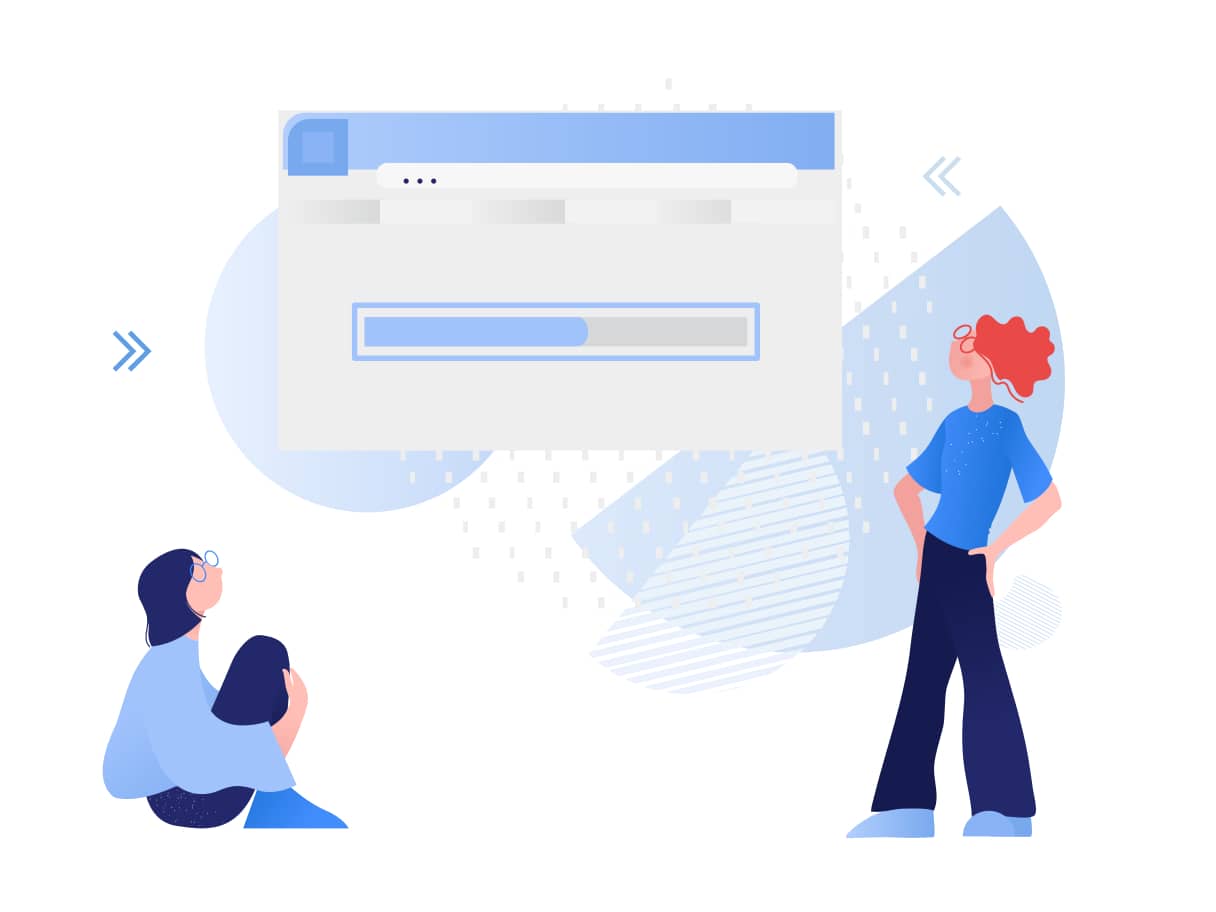Remote work is no longer an 'alternative' to in-office working. Surpassing its reputation as being a corporate trend, remote work has made space for itself in mainstream work culture.
Owning to numerous benefits of working remotely for employees and companies, it has become part of employee contracts and company perks.
But how to hire new employees virtually? How to go about with their onboarding process? With no access to a physical office, focus on virtual onboarding right now is more than ever.
Companies that are already well versed in using work from apps and tools to simply work have managed to run their operations seamlessly so far. However, a new herculean task of hiring new talent and onboarding them has suddenly cropped up.
Remote work is the new normal. The regular processes and company culture/ values are being adapted to fit in the new way of working.
But it imposes a new kind of challenge in hiring new talent and adhering to the virtual onboarding for which most companies aren’t ready yet.
How do you do remote onboarding? By using the right tech to make the best virtual onboarding available for their new employees. It will not only help them amalgamate with the company culture in no time but will also help them feel more comfortable with the idea of remote working.
What is Virtual Onboarding?

You might wonder what exactly is virtual onboarding. Virtual Onboarding refers to the process when a company hires a new employee virtually instead of asking them to physically come to the office location and go through the onboarding process.
The newly hired employee can be located anywhere in the world and start a new job via audio/video calls with the management or the HR team.
It is of utmost importance to monitor the onboarding process very closely when done in a remote setup.
The basic requirement of virtual onboarding involves the candidate and someone from the management or HR team to be available via video conferencing.
The company should be ready with a soft copy of the onboarding documents that are usually e-signed by the remote employee. In addition to these, different companies may have different protocols depending on their work culture.
Virtual onboarding process does not have to be messy. It should feel as comprehensive, detailed, and seamless to the new employee as the normal onboarding process.
Challenges in Virtual Onboarding
Virtual onboarding seems very easy at a glance - just like any other chore that a company does - but is one of the most challenging things the management or the HR team faces. Some of the most common challenges are:
1. Making Them Feel at Home
The biggest challenge is making the new employee give a feeling of what it is like to work in the company by meeting the people directly, hearing their thoughts in person, and setting up the right tone for work.
Video calls, no matter how effective they are, cannot replace the intuitiveness and warmth of face-to-face interaction. This can drastically affect the retention of employees.
2. Coordination Gaps Between the Manager and the New Employee
Communication gaps for new employees can be a big hurdle as HRs can’t be connected to the employees for the whole day on a video call. The new employees can be left with many unanswered questions in their heads.
3. Instilling the Company’s Code of Conduct and Work Culture
Each company has a different work culture and core values which they operate by and it can be sensed in the environment when the employee is actually inside the company, on the floor, talking to the people. It is difficult to instill the same feeling while working remotely.
4. A General Lack of Understanding About the Role

Just handing over a list of tasks and responsibilities is not enough for an employee to understand his job role. Several orientation programs help new talent grasp the true understanding of their role.
In an online meeting, many times, a lot of things are left unanswered for the new employees. It can affect how employees perceive their role.
5. Lack of Human Connection
Normally the same onboarding meeting could have made a great impression on the employee regarding the management but with remote onboarding, it leaves out the human connection.
The first day at work is special for many people, especially for people right out of college. The virtual onboarding process does suck out a bit of the specialness of the event.
More challenges are bound to arise as employees start to settle in their role, but if done right, virtual onboarding can help clear tons of doubt in the initial few days itself.
In this article, we have compiled a bunch of pointers that should form your virtual onboarding checklist to ensure that not only the employee feels content but companies can also rest assured that they have done their best to help them welcome onboard.
Virtual Onboarding Checklist
Follow this checklist to ensure smooth virtual onboarding of new talent.
1. Have The Onboarding Process Planned in Advance
It is advised to have every detail of the onboarding process planned so that it can be deployed whenever required. This can help the management give the best experience evenly across the whole virtual onboarding process.
The well-documented plans can be shared with employees to make them feel comfortable and better prepared for the meetings they will be having with different team members or their seniors.
Here is how a sample onboarding program looks like a good starting point if you just started building a new one.
If you are unsure of where to start, it would also help to look into existing templates used by a lot of companies for their onboarding programs.
This ensures that your plans are thorough and effective, and will definitely inspire you to create a program that is streamlined and organized.
2. Use Tools or Apps to Assist in Virtual Onboarding
Tools such as Fireflies.ai can be used to make your virtual onboarding experience easier by sending the new talent a transcription that they can use to have answers to generic FAQs.
In case they have any doubt, they can mark it and get back to you. This will save you tons of time.
Tools like Notion can also be used to make available the resources about the company to the newly hired employee. This setup brings more transparency and makes future onboarding much easier.
Also, as the notion workspace evolves it becomes the one-stop destination for everything at the company.
This is how a well structured and resourceful notion workspace looks like:
3. Make Hardware Arrangements
Not many people have a spare system at home that they can use for remote work. The virtual onboarding process involves making such arrangements as well.
Appropriate and ample arrangements should be made beforehand to provide a working system and IT equipment to the fresh recruits to make sure the experience during meetings remains seamless and glitch-free.
4. Set the Company Expectations Straight
Onboarding is the very first interaction that happens between the employee and the employer after the hiring process. This means it is the best point to set the core values right and company culture straight to make sure the company grows as a team.
5. Welcome Them with Goodies
Providing company swag gifts to employees like online vouchers, e-cards, gift coupons, or even physical gifts like noise-cancellation headphones, t-shirts, etc. can help people connect more with the company and have the feeling that they are working with people who care about them
6. Be Thorough with the Paperwork
HR paperwork should be done thoroughly while making sure the employees understand every clause they are signing. The distance between the HR and the employee should not be a reason behind any lapse in the documentation process.
But this should not also mean that the employees are bombarded with a torrent of paperwork on the day of joining itself. A proper protocol should be set up that best suits your organization’s needs.
7. Schedule Regular Calls to Touch Bases
Regular employees usually have their call invites set for pre-planned meetings. But for the newly hired employees, lack of constant call/ feedback sessions might not sit well with them.
To fix this, try having regular calls for some time with them, schedule regular one-on-ones initially. Once they have integrated well into the company’s structure, a call once or twice every quarter can be scheduled to accumulate feedback.

8. Introduce Them to the Team Before the Organization
If the size of the organization is large, new employees can be introduced to everyone in monthly town hall meetings after they have become comfortable with their respective departments and team members.
New employees must interact with the members outside their team to promote a healthy remote work culture.

9. Have Handbooks, 101s Ready
Prepare a lot of handbooks regarding the role, company culture, most common policies, work protocols, etc. that the new employees can reference back anytime. This will also make the company processes more transparent across all the departments.
10. Assign Work Buddies for Easy Transition
A lot of times the new employees feel hesitant to talk about their concerns. To ensure such things do not amplify and cause the company any trouble, welcome buddies can be assigned to the new employees.
If someone from the team at the same level is there to talk they can be more open to ask questions and get along easily. He or she can be a virtual mentor as well or just a welcome buddy.
11. Inform Them About Perks and Benefits
Making the employees understand all the benefits and perks they will be receiving from day one can pump the new-joiners very well.
It is also advised to set up separate meetings to gauge how the new employees are feeling about their role, how well they are gelling up with their team members, and how high or low their spirits and motivation levels are.
12. Assign Small Tasks to Get Them Started
Another most important part is giving them small tasks they can finish over the weeks while attending to all the onboarding schedules. These tasks can get them started and help them feel more connected with the team.
Tasks can be designed in a way that requires team members to come together which can further help them in establishing communication with each other.
13. Take Feedback
Setup continuous feedback and learning mechanisms in place that can evolve the current processes and make the virtual onboarding much better.
It is like building a process that works like machine learning, that is, all the learnings can be recorded and processed for making the current virtual onboarding better and more efficient over time.
14. Have Conversation Outside Official Channels as Well
After all the necessary official sessions make sure to have some quick and casual follow-ups regarding their understanding so far. Doing so on personal channels will also allow them to open up more and be less hesitant.
This can, going forward, help managers to allocate teams to maximize team productivity and at the same time helping the individual employee to grow.
15. Involve Them in the Team Activities
While onboarding or later in the week companies can organize some team activities where new joiners can get a chance to showcase their skills inside and make new friends faster.
Time to Get Started with Virtual Onboarding

First impressions are important and they probably have severe and long-lasting effects on the new employees. A report from BCG looked at the different HR practices and found onboarding is the only activity that affects employees the most, and stands second in terms of impact, after the process of recruitment itself.
Virtual onboarding is going to be the new practice for a lot of companies and HR professionals. But a lot of companies such as Gitlab, Dell, Doist, Buffer, Automattic, Toggl, Help Scout, CodePen, etc. have been doing this for ages.
It would be great to look at some of these companies and what they have been doing to succeed in remote working.
The situation currently might not be fully in your favor and there might be a lot of hurdles. But this is the right time to build long-lasting processes that embrace the remote working culture.
Companies that can do the best virtual onboarding can have better engagement, retention, and productivity.
But at the heart of all this is to give new employees a warm and heartfelt welcome.
Illustrations by icons8.com









